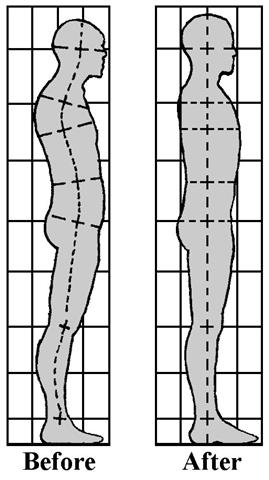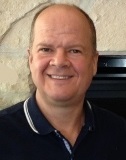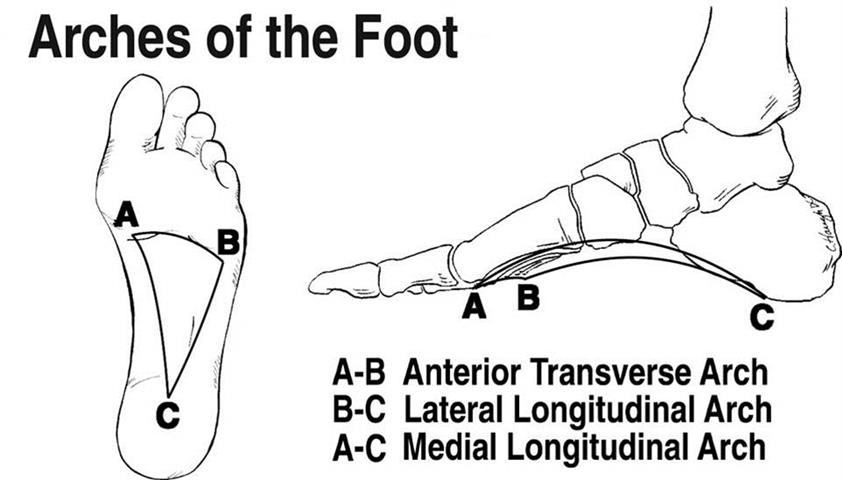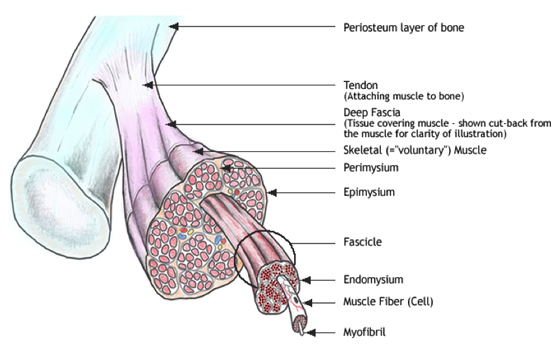-
How Arches of the Feet Affect the Rest of Your Body
Friday, November 15th, 2024by Michael Solberg, Advanced Rolf Practicioner
Arches of the Feet: Why are they important? How do they affect the rest of the body?
Your feet are the foundational structures for your entire body. Much like unbalanced wheels can erode the structure and life of a car, imbalanced feet can have the same effect on the body.
Likewise, a sturdy house built upon a poor foundation is no longer sturdy. There are many aspects of the foot and ankle that determine a sound base, one of the most critical being the arches.
Most people think of feet as having only one arch, while in fact there are three. The foot is composed of the lateral, medial and transverse arches and each of these arches functions differently.
Together they are not only responsible for bearing the weight of the body and properly distributing that weight, but lifting and balancing as well. With proper arches, there is an optimal spring action in the foot. A balanced foot is one where the arches are functioning together.
Try this fun experiment to show yourself a little bit about how the feet can affect the rest of your body: Bend over and reach toward your toes. Make a mental note of how far you can comfortably reach.
Then, while either sitting or standing, place a tennis ball under your feet and firmly roll your arches into the ball for three minutes.
Now remove the ball and reach for your toes again. Can you now reach much further? Although this may seem like a coincidence, or even magic, it is not.
The work in the foot has lengthened the hamstrings because a very important tissue called fascia, which we will discuss in a moment, connects these two areas of the body.
Tight hamstrings are also almost always involved with lower back pain, which affects over 31 million Americans today.
This is just one small example of how the health of your feet has a ripple effect through the rest of the human structure.
What is the Rolf Method of Structural Integration?
Structural integration (SI) is a combination of manual therapy and kinesthetic education developed by Dr. Ida P. Rolf in the early twentieth century.
One of the basic goals of the Rolf Method of Structural Integration is to balance the foot’s three arches. Your arches are actually made up of and shaped by a soft connective tissue called fascia.
Fascia tissue is plastic, meaning it is malleable and able to be molded and sculpted back into its appropriate shape, layers and relationships.
A good visual for how fascia is present in your body can be found by taking a look at an orange. If you peel off the skin of an orange, you will see white matter that covers the orange. If you break the orange into its pieces, it also covers each segment.
Looking further, you will see it also covers each tiny cell. Fascia covers the entire body. It covers every muscle group, every muscle, every fiber, and every cell:
Additionally, there are formations of fascia like straps or bands that wind through your body and connect the support, movement and function of all segments of your body into one unified whole structure.
This is why the tennis ball experiment works on your back and legs simply by opening the fascia connected in your feet.
The effect fascia has on the rest of the body is illustrated by how it also winds through your body much like a three-dimensional spider web. If you pull on one end of the web, the whole structure will feel its pull.
This is why our physical issues must be observed and treated in relation to the rest of the body. A primary consideration of Structural Integration involves creating a proper foundation in the feet for the rest of the structure to build itself upon.
How Structural Integrations Heals the Body Holistically
So how does Dr. Rolf’s method deliver an approach that demands the Rolf practitioner to consider the big picture and therefore offer something uniquely holistic?
An antiquated medical perspective gives you a treatment for your pain symptoms. Better but not complete, are other therapies that will treat the source of your pain, but leave the rest of the body untouched.
This is where Structural Integration comes into play. SI is the manipulation of the fascia, with the intention of organizing and integrating the body’s parts into the greater whole, i.e., the complete structure.
Further, Dr. Rolf discovered how fascia dictates our body’s motion. Facilitating the layers of muscles to slide over each other allows for smooth and uninhibited motion.
When the body is injured from impact trauma, postural habits and repetitive stress, that tissue becomes dense, gluing the muscles together, inhibiting movement, compressing the joints, and stressing the tendons and the ligaments.
 SI works to take that tissue back to a normal gel state and allows the body to work with, instead of against gravity. Dr. Rolf spoke of how gravity is not a weight that presses us down; it is a force that actually organizes us in space, from all sides.
SI works to take that tissue back to a normal gel state and allows the body to work with, instead of against gravity. Dr. Rolf spoke of how gravity is not a weight that presses us down; it is a force that actually organizes us in space, from all sides. There is a rich subject worthy of another article prompted by Dr. Rolf’s quote, “Gravity is the therapist.” Our bodies often heal themselves (and organize themselves) given correct movement and function.
This paradigm shift in understanding that we can harness the field of gravity toward organization of the body, how structural integration/organization relieves many of the aches and pains, and that the correction of body movement makes structural changes lasting was revolutionary in Dr. Rolf’s day and still eludes popular modern therapeutic protocol.
Restoring the integrity of the arches of the feet is a striking example of how the body can promote health throughout the structure by working with movement in gravity in only one part of your body.
Structural Integration is a therapeutic and educational approach available for you to marvel in the experience of working in partnership with your body and the Structural Integration practitioner toward having happy healthy feet (and the rest of you)!
(published August 25, 2013)
 Virginia and Michael Solberg are the founders and owners of the Solberg Center For Structural Integration, which is dedicated to advancing the teachings and vision of Dr. Ida P. Rolf. They are both classically trained in the Rolf Method of Structural Integration, and Michael has earned certification as an Advanced Rolf Practitioner. For more information on Structural Integration and Dr. Rolf, please contact Michael at the Solberg Center for Structural Integration in Plano, Texas: (972) 398-3430, www.solbergcenter.com, [email protected].
Virginia and Michael Solberg are the founders and owners of the Solberg Center For Structural Integration, which is dedicated to advancing the teachings and vision of Dr. Ida P. Rolf. They are both classically trained in the Rolf Method of Structural Integration, and Michael has earned certification as an Advanced Rolf Practitioner. For more information on Structural Integration and Dr. Rolf, please contact Michael at the Solberg Center for Structural Integration in Plano, Texas: (972) 398-3430, www.solbergcenter.com, [email protected].




